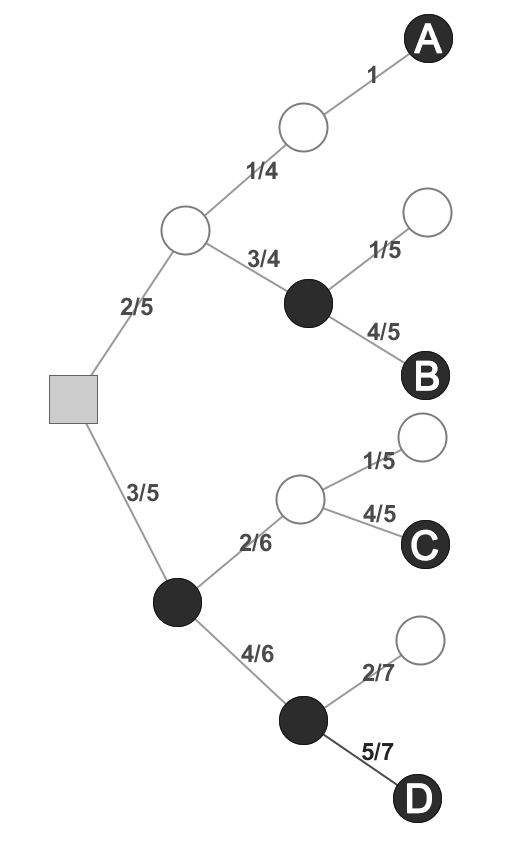Probability
A bag contains 2 white and 3 black balls. A ball is selected at random. If it is white, it is kept aside and if it is black, it is replaced along with another ball of the same colour. The process is repeated thrice. The chance that the third drawing gives a black ball is
This section requires Javascript.
You are seeing this because something didn't load right. We suggest you, (a) try
refreshing the page, (b) enabling javascript if it is disabled on your browser and,
finally, (c)
loading the
non-javascript version of this page
. We're sorry about the hassle.
Due to the small number of drawings (just three), the situation could be easily represented with the following graph: Labels indicate the probability that the event on right will occur, based on the adjustaments due to the previous drawing. Infact the total number of balls change whether we pick a black or a white one (+1 for a black, -1 for a white).
We can evaluate the probability of each event we are interested in, namely events
A
,
B
,
C
,
D
, following the path from the beginning and multiplying the values:
Labels indicate the probability that the event on right will occur, based on the adjustaments due to the previous drawing. Infact the total number of balls change whether we pick a black or a white one (+1 for a black, -1 for a white).
We can evaluate the probability of each event we are interested in, namely events
A
,
B
,
C
,
D
, following the path from the beginning and multiplying the values:
P ( A ) = 5 2 ⋅ 4 1 ⋅ 1 = 1 0 1 ,
P ( B ) = 5 2 ⋅ 4 3 ⋅ 5 4 = 2 5 6 ,
P ( C ) = 5 3 ⋅ 6 2 ⋅ 5 4 = 2 5 4 ,
P ( D ) = 5 3 ⋅ 6 4 ⋅ 7 5 = 2 1 6 ,
In order to find the probability that a black ball will be drawed, we need to sum the previous probabilities (due to the fact that all four path are independent each other):
P ( A ) + P ( B ) + P ( C ) + P ( D ) = 1 4 1 1 .